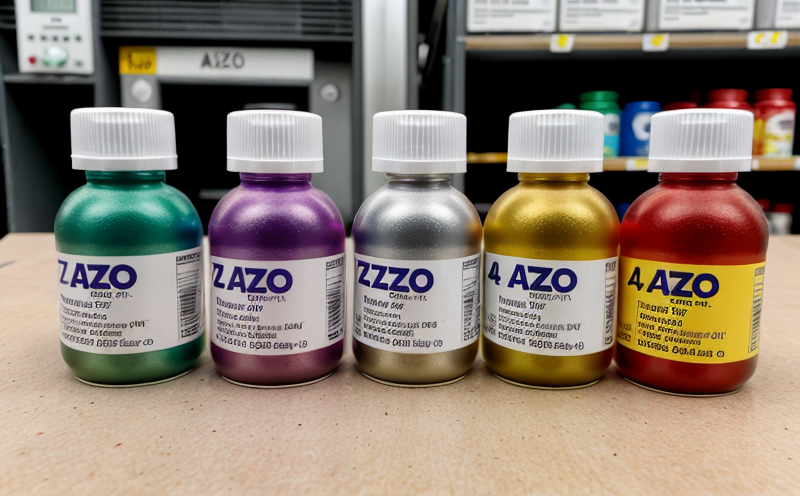Multi element ICP analysis of dyed fabric samples
The use of heavy metals and azo dyes in textile products has raised significant concerns regarding human health and environmental safety. Multi-element Inductively Coupled Plasma (ICP) analysis offers a robust analytical method to detect trace levels of these elements, ensuring compliance with international standards and regulations.
Heavy metals such as lead, cadmium, mercury, and chromium are often used in textile dyes to enhance colorfastness. However, their presence at higher concentrations can be harmful when ingested or absorbed through the skin. Azo dyes, on the other hand, are suspected of releasing aromatic amines under certain conditions, which may pose carcinogenic risks.
Inductively Coupled Plasma Mass Spectrometry (ICP-MS) is a sensitive and precise technique that can analyze multiple elements simultaneously in complex matrices like dyed fabrics. This method provides accurate quantification of heavy metals at parts per billion levels, ensuring reliable data for regulatory compliance.
The analytical process involves several critical steps: sample preparation, digestion using strong acids to break down the fabric fibers and release bound elements, and subsequent analysis via ICP-MS instrumentation. The choice of reagents and digestion procedures is crucial to avoid interference from matrix components and ensure accurate results.
Once analyzed, the data generated by the instrument is processed through advanced software, which calculates elemental concentrations based on calibration standards. Reporting follows international guidelines, typically including limits of detection (LOD), limits of quantification (LOQ), and confidence intervals to provide comprehensive information about the fabric's composition.
This service is particularly valuable for textile manufacturers, brand owners, and quality control departments who need to ensure their products meet stringent safety standards. By detecting even trace amounts of harmful elements, this analysis helps prevent potential health risks associated with improper dyeing processes or unregulated chemical additives.
The benefits extend beyond mere compliance; it also supports continuous improvement in manufacturing practices by identifying and eliminating sources of contamination early in the production cycle. This proactive approach can enhance brand reputation and consumer trust while reducing liability costs related to non-compliance issues.
Why Choose This Test
- Regulatory Compliance: Ensures that dyed fabrics adhere strictly to international standards like ISO, EN, and Oeko-Tex.
- Precision Measurement: Utilizes ICP-MS technology for highly accurate quantification of heavy metals and azo dye components.
- Comprehensive Data: Provides a detailed breakdown of all detected elements including their concentrations, facilitating informed decision-making processes.
- Confidence Intervals: Offers statistical reliability through the provision of confidence intervals for each measured element.
- Efficiency: Shortens turnaround times by streamlining complex analytical procedures into a single process.
- Cost-effectiveness: Minimizes costs associated with multiple round trips to external labs or repeated analyses, thereby optimizing resource allocation.
International Acceptance and Recognition
The multi-element ICP analysis of dyed fabric samples is widely accepted in global markets. International standards such as ISO 17025, ASTM D6833, EN 14362-1, and Oeko-Tex Standard 100 specify the use of this technique for evaluating textile products' safety.
These standards mandate rigorous testing protocols to ensure that textiles do not contain harmful levels of heavy metals or azo dyes. Compliance with these regulations is essential for exporters looking to penetrate international markets and meet consumer expectations regarding product quality and safety.
The acceptance of ICP-MS results across various countries underscores its reliability as a gold standard in analytical chemistry. Laboratories accredited under ISO 17025 are recognized for their proficiency in providing accurate, reproducible measurements, further enhancing the credibility of this service.
Competitive Advantage and Market Impact
In a competitive global market, manufacturers and brands that prioritize product safety gain significant advantages. By proactively addressing potential risks through thorough analysis, companies can mitigate legal challenges and reputational damage linked to non-compliance.
The ability to provide robust evidence of compliance with international standards positions businesses favorably in the eyes of consumers who are increasingly aware and concerned about the environmental and health implications of their purchases. This proactive stance fosters trust and loyalty, translating into enhanced market share and customer satisfaction.
Moreover, early identification of problematic elements allows for timely corrective actions within the supply chain, ensuring consistent quality across all batches produced. Such transparency not only builds consumer confidence but also strengthens long-term relationships with suppliers and partners involved in textile manufacturing.





